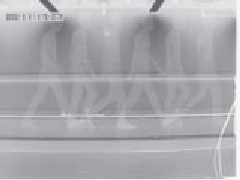Image Processing Reference
In-Depth Information
numbers in the clock, due to the nature of spatial averaging. However, if we form the
background image by taking the median of the six images, a
temporal median
, we then get
a much better estimate of the background as shown in Figure
3.22
(i). A lot of the image
detail is retained, whilst the walking subject disappears. In this case, for a
sequence
of
images where the target walks in front of a
static
background, the median is the most
appropriate operator. If we did not have a sequence, we could just average the single image
with a large operator and that could provide some estimate of the background.
(a) Image 1
(b) 2
(c) 3
(d) 4
(e) 5
(f) Image 6
(g) Temporal averaging
(h) Spatiotemporal averaging
(i) Temporal median
Figure 3.22
Background estimation by mean and median filtering
3.5.3
Mode filter
The
mode
is the final statistic of interest. This is of course very difficult to determine for
small populations and theoretically does not even exist for a continuous distribution. Consider,
for example, determining the mode of the pixels within a square 5 × 5 template. Naturally,
it is possible for all 25 pixels to be different, so each could be considered to be the mode.
As such we are forced to estimate the mode: the truncated median filter, as introduced by

























